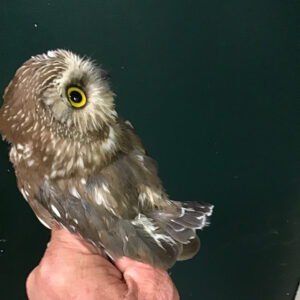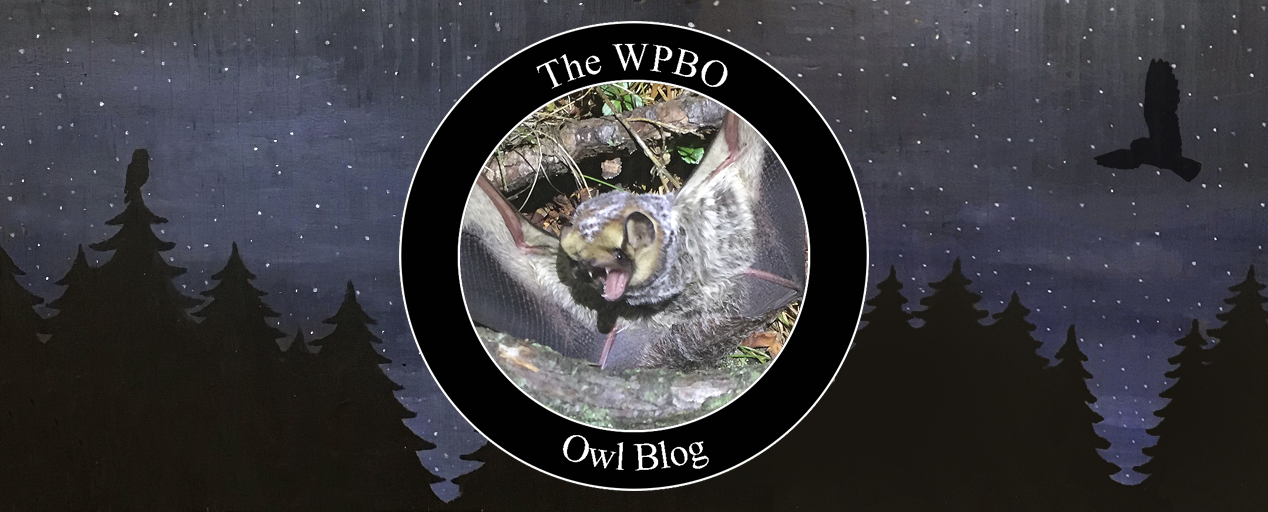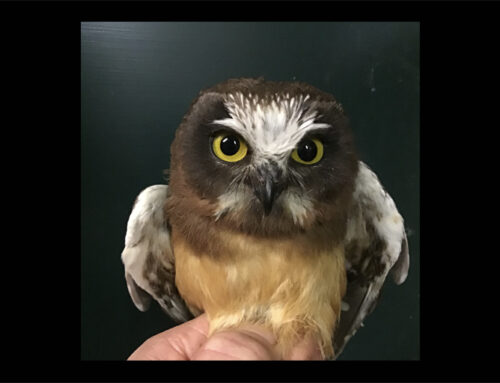As July ended, it was amazing how consistent things were. We’re obviously in a down year, which is an expected event, but things have been almost comical recently. Late July and early August are typically the peak period for juvenile Northern Saw-whet Owls (NSWO). The first little spike in juveniles occurred on July 17 when we banded four. It was a small sign, but our hopes grew that the juveniles might start picking up as we entered the peak period. During the last 11 nights of July, there was one night of zero juveniles, one when we banded one, one night when we banded two, and eight nights when we banded three juveniles. On three of these nights, we caught two juveniles on the second net check of the night and thought, “Okay, this is it. They’re about to pick up.” Nope.
Last night as August began, we again allowed our hopes to be raised as we caught two juveniles on the second check. We did not get another juvenile after that. We’re hoping that two is not the new three. In addition to the owls, we caught the season’s second silver-haired bat and the first hoary bat (banner photo) in a few years. Hoary bats are absolutely gorgeous, and they are Michigan’s largest bat species with a wingspan of up to 15 inches.
This is all part of working on a project whose success is completely reliant on the natural breeding cycle of saw-whets. Down years will happen, and at least we are banding a few owls on most nights. Another positive is that despite some warm, muggy nights this past week, the mosquitoes are down from what they were at the start of the season. Many years they are horrifying throughout the season. We hope the owls remain steady in low numbers and are still hoping that the juveniles will pick up a bit in the coming nights.
Although this is typically the time of year when juvenile NSWO are peaking, it is when the adult NSWO numbers drop off. We don’t know if it is related, but the flight feather molt in adults is now kicking in. Last night, we caught two adults molting their flight feathers in the wing and tail. Both had completely dropped their tail feathers. One had yet to begin replacing them; the other (pictured below) had grown its tail back to about 1/4 of full length.

An adult Northern Saw-whet Owl growing in its new tail. Photo by Chris Neri
Season Totals of Banded Owls
Northern Saw-whet Owls: 110 (47 juveniles & 63 adults)
Long-eared Owls: 13
Total owls banded: 123
Season Totals of Recaptured Owls
Northern Saw-whet Owls: 2
~ Chris Neri & Jess Cosentino
2023 Summer Owl Banders
You can read the owl banders’ weekly blog posts and follow WPBO’s social media (Facebook, Instagram, and Twitter) for owl banding highlights this season.
Owl Banding Presentations — Visitors may observe owls that have been banded on Friday and Saturday evenings from dusk until midnight. Please note that banding is weather dependent and it is at the banders’ discretion to cancel banding accordingly. Observation will be limited to outdoors only. For the safety of the owls, flash photography and recording video is prohibited.




